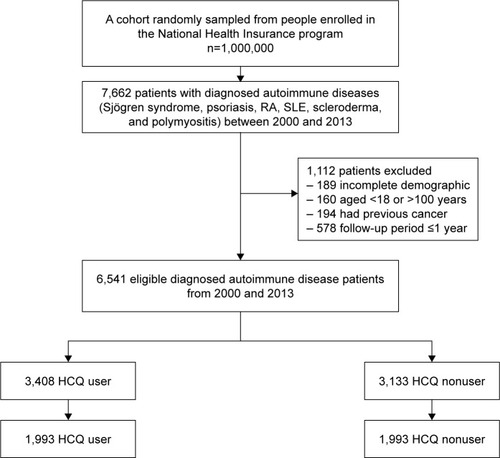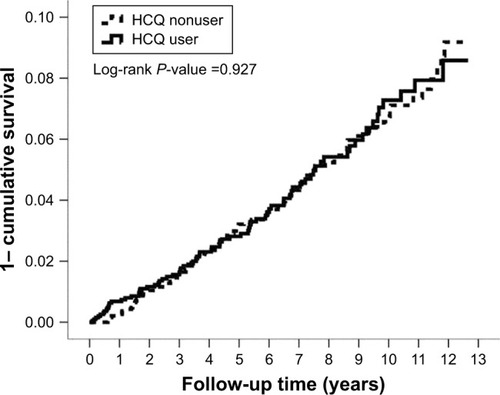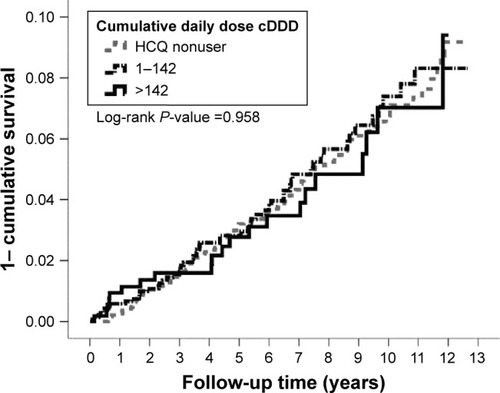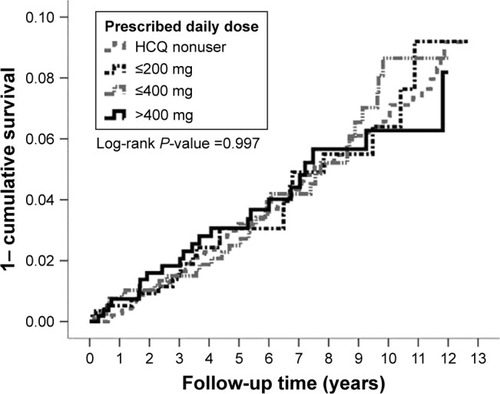Figures & data
Figure 1 Flow chart for subject selection process.
Abbreviations: HCQ, hydroxychloroquine; NHIRD, National Health Insurance Research Database.

Table 1 Demographics and clinical characteristics of the study population
Figure 2 Kaplan–Meier curves for cumulative incidence of cancer, HCQ nonuser and user.
Abbreviation: HCQ, hydroxychloroquine.

Figure 3 Kaplan–Meier curves for cumulative incidence of cancer with various cDDDs of HCQ.
Abbreviations: cDDDs, cumulative defined daily doses; HCQ, hydroxychloroquine.

Figure 4 Kaplan–Meier curves for cumulative incidence of cancer with various prescribed daily dose of HCQ.
Abbreviation: HCQ, hydroxychloroquine.

Table 2 Incidences and hazard ratios of cancer in hydroxychloroquine users compared with nonusers
Table 3 Results of subgroup analysis for cancer incidence of HCQ users and nonusers stratified by various confounders
Table 4 Risk of solid cancer and hematological cancer
Table 5 Results of sensitivity analyses
